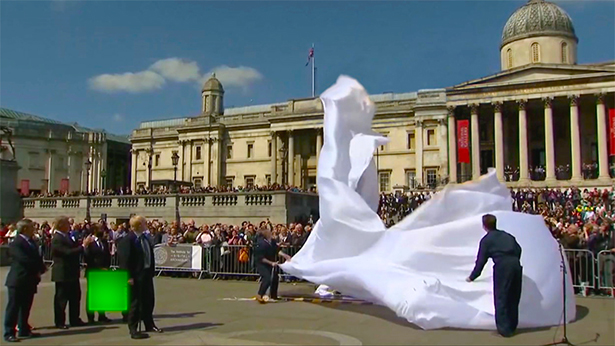Through April 28, 2017
Reed College
3203 SE Woodstock Blvd.
Portland, Oregon 97202
The Douglas F. Cooley Memorial Art Gallery, Reed College presents Iconoclastic, an exhibition examining the ideological construction, imagistic confusion, erasure, and physical destruction of works of art, cultures, nature, and the art historical canon.
Iconoclastic features artworks and projects by: Morehshin Allahyari and Daniel Rourke, Demian DinéYazhi’ and Noelle Sosaya, Maya Lin, Goshka Macuga, Michael Rakowitz, and Ryan Woodring.
Iconoclastic Iconoclastic
Iconoclasm, the purposeful destruction and censorship of images and representational objects, and aniconism, the refusal to produce images, are recurring phenomena throughout the history of art. Long neglected by art historians, their study is now considered central to the understanding of the historical function of images. Prominent examples of iconoclasm and aniconism across time include: the ancient practice of destroying the monuments of previous rulers; the prohibition on images in the Hebrew Bible; Christian iconoclasm in medieval Byzantium and in the wake of the Protestant Reformation; state-sponsored destruction of images during the French and Russian revolutions and the Nazi era; vandalism; contemporary attempts to censor the visual arts; and the draining of iconographic power in neoliberal capitalism. Recent examples of iconoclasm include the destruction of religious shrines and monuments in the Middle East, such as the Monumental Arch of Palmyra in Syria in March 2016. Various western groups have worked to virtually preserve and reconstruct such monuments by means of anastylosis and 3D modeling—confronting iconoclasm through data collection and remediation.
How has the experience and understanding of historical and contemporary forms of iconoclasm and aniconism been transformed in the context of a world rife with humanitarian, political, and environmental crises? Intentionally subverting, manipulating, and destroying images has played a critical role in artists’ ability to confront corruption and oppression. The destruction and absence described in past histories of iconoclasm must be expanded to consider the phenomenon in relationship to the global circulation and suppression of images and information that establish and transmit ideologies of the image, particularly in the more hidden dimensions of archives, corporate culture, and digital networks.
Exhibition curators: Stephanie Snyder, John and Anne Hauberg Curator and Director, Douglas F. Cooley Memorial Art Gallery, and William J. Diebold, Jane Neuberger Goodsell Professor of Art History and Humanities, Reed College.
Stephanie SnyderWilliam J. DieboldThe Douglas F. Cooley Memorial Art Gallery, Reed College, is an intimate academic museum, nestled in the Reed College library. The Cooley was established by a generous 1988 endowment from Sue and Edward Cooley and John and Betty Gray “in support of the teaching of art history at Reed College, as part of an interdisciplinary educational experience that strengthens the art history component of Reed’s distinctive humanities program.” Exhibitions are curated by director Stephanie Snyder, often in collaboration with Reed faculty and courses across the disciplines, with attention to the needs and interests of the larger Portland and Northwest arts communities. A schedule of three to four exhibitions during the academic year brings to Reed and the Portland community work that would not otherwise be seen in the region. Exhibiting artists include: Sacha Yanow, Brad Kahlhamer, Wynne Greenwood, David Reed ’68, Léonie Guyer, Bruce Nauman, Kara Walker, Lynda Benglis, Sutapa Biswas, Marc Joseph Berg, Maya Lin, Molly Dilworth, Lynne Woods Turner, and Lorna Bieber. The Cooley organizes a K-12 education outreach and teacher-training program, and founded Reed’s new Calligraphy Initiative, which is returning the legacy and study of calligraphy and paleography to Reed College, in honor of Reed College calligraphy professor Lloyd J. Reynolds (1902–78).
The Douglas F. Cooley Memorial Art Gallery, Reed College


